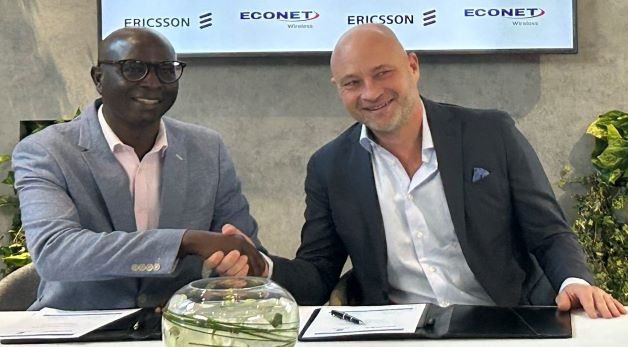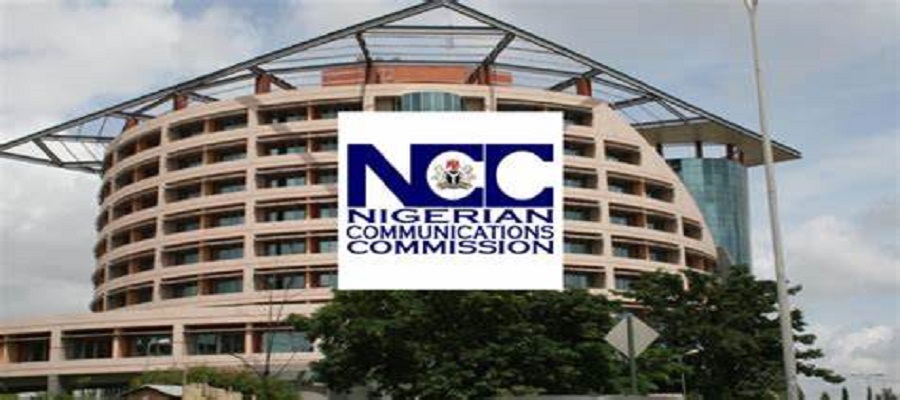Telecom
Econet Partners Ericsson to Modernize Network Infrastructure

Econet Wireless Zimbabwe has strengthened its partnership with Ericsson at Mobile World Congress 2023, Barcelona, Spain as it prepares for 5G expansion by modernizing its Radio Access Network (RAN) and mobile Core network across Harare, Zimbabwe.

Through upgrades in its mobile Core and RAN solutions, Ericsson will help accelerate Econet’s digital transformation journey. The network upgrade will pave the way for Econet to deliver 5G connectivity in more locations, unlocking advanced consumer and enterprise use cases.
As part of the mobile Core evolution, Ericsson will modernize the existing Evolved Packet Core (EPC) network to cloud-native dual-mode 5G Core, as well as upgrade the Unified Data Management (UDM) solution.
The scope of the agreement with Econet also includes Ericsson’s cloud infrastructure solutions, the Circuit Switch Core modernization and the introduction of IP Multimedia System (IMS) for Voice over LTE (VoLTE) and Voice over WiFi (VoWiFi).
Modernizing Econet’s network infrastructure will enable a wide range of services to subscribers, including high-definition VoLTE and applications that require low latency and improved responsiveness.
High-speed internet will be enabled through 4G and 5G radio access networks, coupled to the modernized packet core network. Along with enhancing user experience, Econet will also benefit from increased network coverage and capacity.
The network modernization will include Econet’s existing 2G, 3G and LTE networks, with Ericsson’s latest 5G multi-band, multi-sector radios – such as Radio 4466 – which offers capacity expansion, energy efficiency and an average of 15 percent reduction in tower load. Through the partnership, Econet will realize greater LTE indoor penetration and continue its seamless deployment of 5G, Narrowband-Internet of Things (NB-IoT) and private networks.
Mr Roy Chimanikire, Deputy CEO at Econet Wireless Zimbabwe says: “Econet Wireless Zimbabwe is on a mission to realize an advanced 5G ecosystem in the country. Our latest partnership with Ericsson brings us closer to realizing this ambition with 5G expansions in more locations.
Powering several digital technologies, 5G will play a pivotal role in realizing many of the goals outlined in the Smart Zimbabwe 2030 agenda, notably in smart industrialization. Working alongside Ericsson, we aspire to build a high-performing 5G network that will not only deliver high connectivity but also support industrial and societal advancements in Zimbabwe.”
Todd Ashton, Vice President and Head of Ericsson South and East Africa at Ericsson Middle East and Africa, says: “We have enjoyed a close and productive partnership with Econet for more than two decades, and we remain committed to supporting them in strengthening their network infrastructure as Zimbabwe lays out ambitious digital plans.
“Our solutions will provide Econet with incredible speeds and mobility and introduce next-generation connectivity services seamlessly. It will also accelerate the introduction of new 5G use cases that will support the nation’s digitalization momentum and assert its position in the growing digital economy.”
Early last year, Ericsson partnered with Econet to launch 5G across Harare, Zimbabwe. The modernization of Econet’s network infrastructure through Ericsson’s enhanced Radio Access Network (RAN) portfolio and core portfolio will complement the digital infrastructure goals of the Smart Zimbabwe 2030 agenda and bring Econet closer to attaining 5G market leadership in the country.
Telecom
ngCERT Issues High Alert to Nigerians Using Android Phones

Nigeria Computer Emergency Response Team (ngCERT) has raised alarms over a new wave of advanced cyberattacks targeting Android mobile phones through a malware campaign dubbed Tria Stealer.

The malicious software is designed to infiltrate Android devices, hijack messaging accounts, intercept One-Time Passwords (OTPs), to steal sensitive personal and financial data.
According to ngCERT, Tria Stealer spreads primarily through deceptive tactics, such as fake event invitations distributed via popular messaging platforms like WhatsApp and Telegram.
Unsuspecting users are enticed to download an infected (APK) file, often disguised as a harmless system application, to evade detection.
Once installed, Tria Stealer requests extensive permissions, including access to SMS, call logs, and app notifications.
It immediately commences data harvesting activities, sending stolen information to a Command and Control (C2) server operated via Telegram bots.
This trojan spreads through fake links, usually disguised as wedding or event invites, and tricks users into downloading malicious APK files
“Account takeover of messaging platforms. Impersonation of victim for fraudulent money transfer requests. Compromise of banking and financial applications. Identity theft and credential harvesting.”
In plain terms, if your phone is compromised, the consequences could be catastrophic.
Your financial apps are vulnerable, your reputation could be ruined by impersonation and even simple personal messages could be twisted into tools for scams.
Here’s what users should be doing now:
Don’t download apps outside the official Play Store.
Be suspicious of random invites or links, even from people you know.
Turn on 2FA for everything—banking, emails, social platforms.
Get a reputable antivirus and keep it updated.
If you run an organisation, you should already be taking this seriously.
ngCERT’s guidance says you should raise awareness, monitor mobile devices, and not let your team click on unverified links.
“Deploy network monitoring for suspicious outbound connections to known C2 domains,” it said, meaning, keep an eye on every digital door in and out.
This isn’t one of those cases where you wait to see if it affects you. By the time you realise it, it may already be too late.
Telecom
MTN and Ecobank Launch Chess Championship to Empower Nigeria’s Youth

MTN Nigeria is set to host the National Schools Team Chess Championship, Nigeria’s largest inter-school chess competition, scheduled to take place from June 26th to 28th, 2025, at the Ecobank Pan African Center in Victoria Island, Lagos.

The championship, organised in partnership with Ecobank and the Nigeria Chess Federation (NCF), aims to promote intellectual development, critical thinking, and problem-solving skills among young Nigerians, while also identifying and nurturing future chess champions.
The championship is open to primary, secondary, and tertiary level students, and this year’s edition will host an impressive 1,600 students from 400 schools across 36 states and the FCT.
The competition will feature team-based play, with each team comprising four players from the same school. A significant prize pool of over N40 million is at stake, with winning schools also having the invaluable opportunity to represent Nigeria internationally.
Onyinye Ikenna Emeka, Chief Marketing Officer (CMO) at MTN Nigeria, expressed the company’s commitment to the initiative, stating, “Our investment is driven by our commitment to fostering youth development, just as our shared value initiative.
“By supporting, we not only contribute to the growth but also engage with the younger demographic in a meaningful way, as we believe we are good together”.
MTN’s sponsorship of the National Schools Team Chess Championship is a natural extension of its long-standing dedication to empowering young people through various initiatives in sports, education, and skill development, including programs like MTN Champs and MTN Campus Invasion.
The company aims to establish itself as the leading driver of youth empowerment, education, and strategic thinking through chess in Nigeria.
The event will also feature the presence of Tunde Onakoya, a renowned chess master and inspiration, who will join the championship week to share his experiences and further inspire the young participants.
His involvement underscores the profound impact strategic thinking can have on transforming lives and building dreams.
Telecom
NCC and Stakeholders Unite to Bridge Nigeria’s Rural Connectivity Gap

Nigerian Communications Commission (NCC) has collaborated with the Association for Progressive Communications and other institutional stakeholders towards addressing challenges confronting rural network connectivity in Nigeria.

The collaboration resulted in a two-day workshop hosted in Abuja from June 3-4, 2025, to explore policy framework for enabling community networks towards bridging the digital divide and accelerating socio-economic development in Nigeria’s underserved and unserved communities.
The forum brought together regulators, community leaders, technical experts and potential foreign investors, among others, to examine policy and regulatory barriers, explore innovative funding mechanisms, ensure sustainable renewable solutions and strengthen collaboration with stakeholders.
Addressing participants at the workshop, the Executive Vice Chairman of NCC, Dr. Aminu Maida, said the workshop is important to bridging the digital divide in Nigeria and foster inclusive social economic development.
“This workshop is an opportunity for all of us to harness the expertise, insights, and experiences of diverse stakeholders present here which includes the regulators, community leaders, technical experts and potential foreign providers to address the critical challenges such as affordable devices, access, licensing, spectrum allocation, infrastructure development, sustainability and institutional monitoring,” said Maida, who was represented by the Executive Commissioner, Technical Services, NCC at the event, Abraham Oshadami.
Maida said the workshop demonstrates the Commission’s commitment to advancing digital inclusion, particularly in underserved and unserved areas. “At NCC, we recognise the transformative potential of community center networks in achieving this important goal,” he said.
The EVC said NCC was committed to “this journey and views this workshop as a catalyst for meaningful change,” stating that the expertise, perspectives and commitments will shape the future where every Nigerian, regardless of his or her status, will have meaningful access to opportunities from digital connectivity.
In her remarks, Co-manager of the Association for Progressive Communications’ Local Network (LocNet) initiative, Kathleen Diga, noted that the collaboration was to tackle identified hindrances to digital inclusion. “This is a space where we can be open and exchange ideas of possibilities, opportunities that will remain in realising values of a diversified ecosystem.”
Diga said, “I believe this workshop presents a moment in time that we can explore the bottom-up approach in local communities, small social enterprises, corporative among others, which have the ability to fill some of the digital gaps that remain unfilled,” she said, adding emphasising the need to recognise that community centre connectivity exists and they are grow throughout the global south, which, she said, are a “strategic response to digital exclusion.”
The workshop featured presentations from the NCC, the Association for Progressive Communications and other institutional stakeholders such as the Rural Electrification Agency (REA) and the Central Bank of Nigeria (CBN) all geared towards exploring a joint policy framework to address rural digital divide.
The Association for Progressive Communications is a 35-year-old international network member-based organisation encouraging digital inclusion in the unserved communities, particularly with communities in the global south and the workshop, through its LocNet initiative aimed at crafting an enabling inclusive regulatory framework for community networks in Nigeria.

 Telecom2 days ago
Telecom2 days agoTelcos Hit by Major Outages across Lagos, Enugu, Others

 E-Business2 days ago
E-Business2 days agoHuman Hacking: When Cyber Criminals Target You

 News2 days ago
News2 days agoBeware!, Fraudsters Using our Name to Defraud Investors- NNPCL

 E-Financial2 days ago
E-Financial2 days agoAGF Drops Charges Against Fidelity Bank MD, Cites Lack of Direct Involvement

 E-Financial2 days ago
E-Financial2 days agoFIRS Launches Revised SOP to Streamline Tax Payment

 E-Financial2 days ago
E-Financial2 days agoConfidence in Nigerian Economy Grows as Forex Inflows Reach $5.96Bn

 News2 days ago
News2 days agoFG Plans AgriConnect Initiative Pilot

 News2 days ago
News2 days agoAAAN Congratulates Steve Babaeko, X3M Ideas on Financial Times Recognition




























